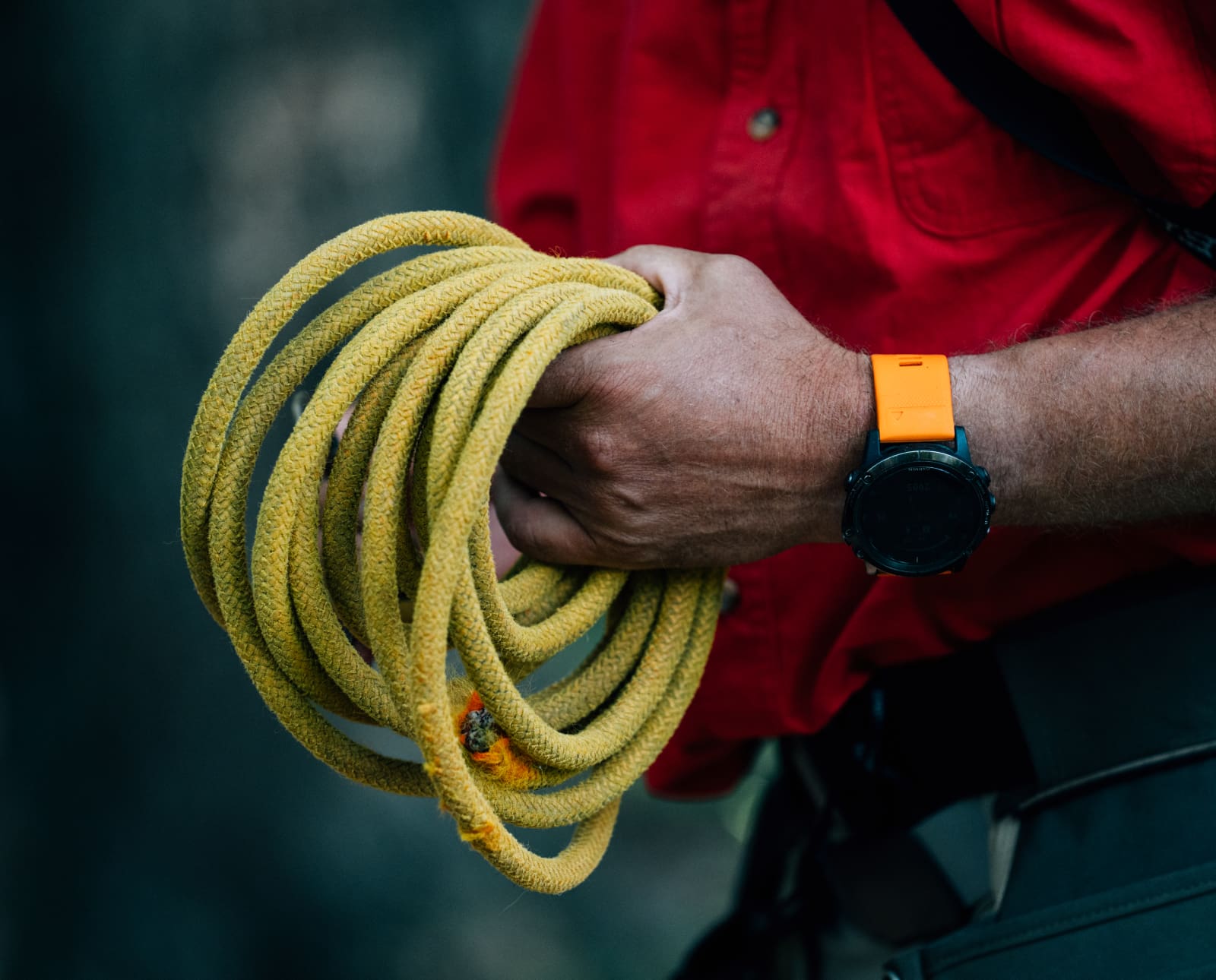Home » Hunting Dogs » Basics of Training Dogs with a Long Lead
Basics of Training Dogs with a Long Lead

Jason Carter is a NAVHDA judge, NADKC member, director of…
Is using long leads to train dogs a relic of the past or a timeless treasure?
Dog training methodologies are vast. The long lead’s outward appearance may seem to be a relic of training days gone by. And truth be told, for some, they wouldn’t be wrong. With the invention of the e-collar and the now mainstream training approaches of utilizing classical and operant conditioning, many trainers forego the use of the long lead altogether.
Listen to more articles on Apple | Google | Spotify | Audible
I’d argue that the long lead is not only relevant today but is also an essential tool in developing new trainers before they touch an e-collar. It reduces the chances of overcorrecting, promotes a connection with your dog the e-collar can’t provide, and develops the timing and focus every trainer needs to maximize their dog’s learning.
Though a simple tool, there are a few things to consider when choosing the right long lead for you and your dog.
Types of Long Leads
Long leads come in all shapes and sizes. When choosing the right lead, there are a few things to consider. Purchasing an age-appropriate long lead is based on the size of the dog. Like anything, there is give and take when choosing a lead. The smaller the dog, the smaller the lead should be. However, a small lead on a big dog can be very uncomfortable on the hands. The larger the diameter, the easier the lead is to handle, though more difficult for the dog to drag. The longer the lead, the easier it is to get to when needed, but it’s more difficult to manage.
Therefore,
- Choose a lead that your dog can pull effortlessly
- Choose a length that you can easily manage.
- Choose a material that is easy on the hands.
- Choose a diameter that you can easily control.
You will need to try out various brands to figure out what works best for you.
Also, Biothane or rubber-type leads avoid rot but are hard to handle when wet. Michael Neiduski, owner of Ugly Dog Hunting, explains, “The biggest issue is that Biothane versions of the long lead have a bit too much stretch in the worst moments, like when the dog is lunging for the bird.”
I prefer dense, rigid leads around 15 to 20 feet long for older dogs. They are stiff enough not to get caught on things while still being comfortable on the hands.
I like to run a short piece of paracord with a small clip for real young pups. I will play with it indoors periodically and consistently outdoors. My mission is to teach the pup to ignore the lead and associate it with positive experiences. It represents runs in the field, fun drills, games, birds, and yummy treats or praise. As the pup develops, it will encourage the pup to want to work and accept the control to make it work. It leaves the pup connected with the impression that I’m its leader and provides fun early training opportunities.
This puppy lead also helps avoid introducing bad habits as the adolescent pup tests your boundaries and control. Good behaviors get reinforced, and poor ones are denied the opportunity to develop. As I always say, good trainers can fix problems, but great trainers never have them.

Other Things to Consider When Training With a Long Lead
Gloves—Wear gloves when working with a long lead, as it can burn if it slips through your bare hands quickly.
Tall boots or socks—If you have ever had a pup pull its lead across your bare ankles, you know all too well how painful nylon leads can be. Tall boots and socks help protect you.
Over the back—It’s also important to know that the lead should always be mended to lay across a dog’s back. The most common injuries occur when the lead is pulled while wrapped around a leg.
No knots and loops—Though knots and loops in your lead seem like a good idea, they easily catch on things, creating a safety hazard. They can also be a real pain to manage. When running a long lead in the woods, dogs can get entangled around trees and bushes when their line is knotted.
Line management—The longer the line, the harder it is to manage. It takes a nimble hand to manage an excited dog around birds. It’s important to constantly mend the lead to where you can connect with the dog in an instant when needed.
GPS or e-collar—For flight-risk dogs, the long lead should be used in conjunction with a beeper or GPS collar in case they get entangled at a distance.
Strength—Often, clients complain that they aren’t strong enough to give their dog the correction it needs. I’d argue the problem isn’t with the handler’s strength but rather a weak foundation of understanding. One, they haven’t developed their dog’s understanding to the point where it doesn’t require a harsh correction. Two, the correction they are giving isn’t being done in a way that sends the right message.
Age—For many of us aging trainers, we have old war wounds to contend with. Back, knee, shoulder, and wrist injuries often plague those who have been around the block a few times. Learning to manage the lead to reduce the risk of injury is essential. Some trainers will use a body or elbow wrap to prevent straining their body. For some, this works well, but for others, they go for a ride and not in a fun way. Training stakes or whoa posts are a great alternative to anchor the dog and help reduce wear and tear on the trainer.
Overcorrecting—Overly harsh lead corrections on a neck collar can potentially cause neck injuries. Overcorrection utilizing the half hitch around the belly risks internal injuries. Both methods work effectively; just be careful not to overcorrect.
The long lead is a timeless treasure of the past that has many applications in most training systems today. It gives dogs the structure and boundaries they need during their developmental age. It guides the dog towards success, allowing you to mark and promote your desired behaviors.
Long leads are a two-way line of communication that provides feedback to and from your dog. Success in your training is dependent on giving clear feedback. When properly used, the long-lead guides your dog toward success and simplifies lessons, making them digestible.
Using the long lead requires a handler to read their dog and predict behaviors before they appear. It improves a trainer’s timing and focus, teaching them to live in the moment with their dog, an essential skill to have before attempting to implement the e-collar.
Jason Carter is a NAVHDA judge, NADKC member, director of youth development, secretary of NAVHDA’s youth committee, clinic leader and trainer at Merrymeeting Kennels. He has been around versatile hunting dogs his entire life, literally! Born into the Carter family and Merrymeeting Kennels, he attended his first NAVHDA test in Bowdoinham, Maine, when he was just a year of age. Jason successfully trains, tests and breeds Deutsch Kurzhaars in both the NAVHDA and NADKC testing systems. Through his work at the kennel, Jason has had the opportunity to develop pointers, flushers and retrievers over the years. When October arrives he can be found with family and friends hunting throughout New England.




Totally agree. Fast hands and anticipating the dogs action. A long lead is hands on and done correctly leads to a better gelling of the handler and the dog.